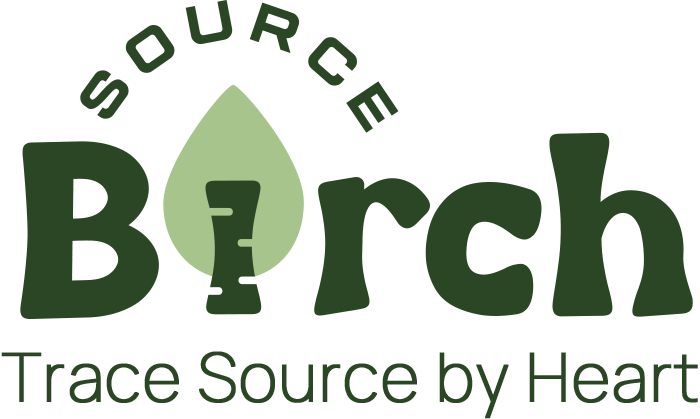Birch Sap: Unearthing Nature's Ancient Elixir for Holistic Wellness and Sustainable Living
Birch Sap: Unearthing Nature's Ancient Elixir for Holistic Wellness and Sustainable Living

In the serene hush of early spring, as nature reawakens from its winter slumber, something extraordinary begins to flow within the majestic birch trees: birch sap. For centuries, this clear, slightly sweet liquid has been revered across Northern Europe, Russia, and parts of Asia as a traditional folk remedy and a refreshing seasonal drink. Far from being just simple tree water, birch sap is a complex natural elixir, embodying a unique blend of minerals, vitamins, sugars, and plant compounds. Its resurgence in modern wellness circles is a testament to its compelling profile, aligning perfectly with a growing global interest in natural superfoods and sustainable practices. This article will guide you through the fascinating journey of birch sap, from its ancient roots to its potential as a sustainable wellness powerhouse.
What Exactly Is Birch Sap?
Birch sap, often simply called "birch water," is the fluid that circulates within birch trees (genus Betula) during the brief period between the ground thawing in early spring and the tree producing its first leaves. This process, known as 'tapping,' involves gently extracting the transparent, almost colorless liquid directly from the tree trunk. The sap is essentially the tree's nutrient-rich blood, carrying stored sugars and minerals from its roots up to its branches to support new growth. Its taste is exceptionally subtle, often described as mildly sweet with a crisp, slightly earthy, or woody finish. It's not thick like syrup, but rather possesses a watery consistency, making it an incredibly refreshing beverage directly from nature.
A Glimpse into History: Traditional Uses of Birch Sap
The tradition of collecting and consuming birch sap dates back thousands of years, deeply embedded in the cultural heritage of various regions. Ancient Germanic and Slavic tribes, as well as indigenous communities in North America and Siberia, recognized its value long before modern science affirmed its nutritional content. Historically, it was consumed as a revitalizing spring tonic, believed to cleanse the body, boost energy after a long winter, and offer protection against various ailments. Several cultures fermented it into beverages like wine or vinegar, preserving its benefits beyond the tapping season. This rich history underscores birch sap's long-standing reputation as a natural health remedy and a vital seasonal resource.
The Nutritional Powerhouse: What's Inside Birch Sap?
Despite its watery appearance, birch sap boasts an impressive nutritional composition, making it far more than just flavored water. While its exact content can vary slightly depending on the tree species, soil conditions, and harvest time, it generally contains a unique blend of:
- Minerals: Including potassium, calcium, magnesium, manganese, zinc, and phosphorus.
- Vitamins: Small amounts of Vitamin C and B vitamins.
- Amino Acids: Essential building blocks for proteins.
- Antioxidants: Such as polyphenols and flavonoids, which combat oxidative stress.
- Sugars: Primarily fructose and glucose, providing natural sweetness.
- Xylitol: A natural sugar alcohol known for its dental health benefits.
- Enzymes: Contributing to its bioactivity.
Here's a simplified overview of its typical nutritional components per 100ml:
| Nutrient | Approximate Amount (per 100ml) |
|---|---|
| Calories | 5-10 kcal |
| Sugars | 1-2.5g |
| Potassium | 5-20mg |
| Calcium | 3-15mg |
| Magnesium | 0.5-2mg |
| Manganese | 0.05-0.2mg |
| Amino Acids | Trace |
| Antioxidants | Present |
Health Benefits Unveiled: Why Drink Birch Sap?
The traditional uses of birch sap are increasingly supported by contemporary research and anecdotal evidence. Its unique composition offers a range of potential health benefits:
- Natural Hydration and Electrolyte Balance: With its naturally occurring minerals, birch sap serves as an excellent natural hydrator, replenishing electrolytes lost through daily activity or exercise. It's a healthier alternative to sugary sports drinks.
- Detoxification and Diuretic Properties: Historically used as a cleansing tonic, birch sap is believed to act as a mild diuretic, aiding the kidneys in flushing out toxins and excess fluids. This contributes to a feeling of revitalization.
- Skin Health and Anti-Aging: The presence of antioxidants and minerals supports overall skin health, potentially protecting against free radical damage and promoting a youthful appearance. Its hydrating properties are also beneficial for skin elasticity.
- Anti-inflammatory Effects: Compounds in birch sap may possess anti-inflammatory properties, potentially aiding in reducing inflammation and soothing conditions like arthritis or muscle soreness.
- Immune System Support: While not a primary immune booster, the vitamins and minerals contribute to overall well-being, which in turn supports a robust immune system.
- Digestive Health: Xylitol, a component of birch sap, is known to have prebiotic effects, potentially fostering a healthy gut microbiome.
Sustainable Harvesting: Tapping into Nature Responsibly
Sustainability is paramount when it comes to harvesting birch sap. The process itself is environmentally friendly when executed correctly, ensuring the long-term health of the birch forests. Responsible harvesting involves:
- Timing: Tapping occurs only for a few weeks in early spring, before leaf-out, when the sap flow is at its peak. This short window minimizes stress on the tree.
- Tree Health: Only mature, healthy trees are selected for tapping, typically those with a diameter of at least 20-30 cm. Excessive tapping or tapping young trees can harm them.
- Proper Tapping Technique: Small holes are drilled only a few centimeters deep into the trunk, angled slightly upwards. The collected sap flows out slowly, usually just a few liters per tree per season to ensure the tree's vitality.
- Sealing: After tapping, the holes are carefully plugged to prevent infection and promote healing.
- Rotation: Harvesters often rotate trees each year, giving them time to recover.
This careful approach ensures that birch sap can be enjoyed for generations without negatively impacting the forest ecosystem. Look for products that emphasize ethical and sustainable sourcing practices.
From Forest to Feast: Culinary Applications of Birch Sap
While often enjoyed plain and chilled, birch sap's delicate flavor profile makes it a surprisingly versatile ingredient in the kitchen:
- Refreshing Drink: The most common use. Best served cold, directly from the source or a well-bottled product.
- Smoothie Base: Adds a subtle sweetness and mineral boost to fruit and vegetable smoothies.
- Cocktails and Mocktails: Can be used as a unique, neutral base for beverages, imparting a subtle woody note.
- Birch Syrup: By boiling down the sap (a process similar to maple syrup production, but requiring much more sap due to lower sugar content), a rich, caramel-like syrup can be created. This is a rare and highly prized delicacy.
- Fermented Beverages: Historically, birch sap has been fermented into alcoholic and non-alcoholic drinks, including birch beer or even a delicate birch wine. Modern applications include natural sodas.
- Culinary Enhancer: Can be used as a liquid in baking, simmering grains, or as a base for light sauces, adding a delicate flavor nuance.
Birch Sap in Beauty and Skincare: Nature's Elixir for Skin
Beyond internal consumption, birch sap has gained traction in the beauty and skincare industry, particularly in Korean skincare (K-beauty) and natural cosmetics. Its hydrating, soothing, and antioxidant properties make it a favored ingredient for various formulations:
- Moisturizers and Serums: It helps to replenish skin's moisture barrier, leading to plump, hydrated skin.
- Soothing Treatments: Known for its anti-inflammatory properties, it can calm irritated or sensitive skin.
- Anti-Aging Products: The antioxidants contribute to protecting skin from environmental damage, potentially reducing the appearance of fine lines and wrinkles.
- Hair Care: Used in shampoos and conditioners, it is believed to strengthen hair follicles and add natural shine.
Many brands highlight birch sap as a key natural alternative to plain water in their formulas, emphasizing its beneficial mineral and vitamin content.
Potential Side Effects and Precautions
While birch sap is generally considered safe for consumption by most individuals, a few considerations should be kept in mind:
- Allergies: Individuals with birch pollen allergies might experience an allergic reaction due to cross-reactivity. It's advisable to exercise caution and consult a healthcare professional if you have known allergies.
- Sugar Content: While natural, birch sap contains sugars (primarily fructose and glucose). Diabetics or those monitoring sugar intake should be mindful of this, although the content is relatively low compared to fruit juices.
- Sourcing and Purity: Ensure the birch sap is sourced from clean, unpolluted environments and processed hygienically to avoid contamination.
- Preservation: Fresh birch sap is highly perishable. Proper refrigeration and pasteurization (for commercial products) are crucial to prevent spoilage.
Always start with small quantities to assess your body's reaction, especially if you have sensitivities.
Birch Sap vs. Other Tree Waters
Birch sap is part of a growing category of tree waters, each with its unique characteristics. Here's a brief comparison:
| Feature | Birch Sap | Maple Water | Coconut Water |
|---|---|---|---|
| Source Tree | Birch (Betula spp.) | Maple (Acer spp.) | Coconut Palm (Cocos nucifera) |
| Flavor Profile | Subtle sweet, slightly earthy/woody, crisp | Mildly sweet, slightly caramel-like, earthy | Sweet, nutty, tropical |
| Sugar Content | Low (1-2.5%) | Moderate (2-3%) | Moderate (2-5%) |
| Key Minerals | Manganese, Potassium, Calcium | Manganese, Zinc, Calcium | Potassium, Sodium, Magnesium |
| Harvest Season | Early spring only | Early spring only | Year-round in tropical climates |
| Primary Use | Hydration, detox, beauty | Hydration, natural sweetener | Hydration, electrolyte replenishment |
Each tree water offers distinct benefits, but birch sap stands out for its delicate flavor, lower sugar content, and unique micronutrient profile, particularly its manganese content.
How to Choose High-Quality Birch Sap Products
As birch sap's popularity grows, so does the market for its products. To ensure you're getting a high-quality, authentic product:
- Source Transparency: Look for brands that clearly state their sourcing location and sustainable harvesting practices. Certifications can be a good indicator.
- Minimal Processing: The best birch sap is minimally processed, ideally just filtered and pasteurized (if not fresh) to retain its natural integrity.
- Ingredient List: Check for added sugars, artificial flavors, or preservatives. Pure birch sap should have a very short ingredient list.
- Packaging: Opt for dark glass bottles or opaque packaging to protect sensitive nutrients from light degradation.
- Storage: Understand if the product needs refrigeration or has a limited shelf life once opened.
Prioritizing transparency and minimal processing ensures you reap the full benefits of this natural elixir.
The Future of Birch Sap: A Rising Star in Wellness
Birch sap is poised to move from a niche health product to a mainstream wellness staple. Its appeal lies in its natural origins, impressive nutrient profile, and the growing consumer demand for clean-label, plant-based products. Ongoing research continues to explore its full therapeutic potential, particularly in areas like metabolic health, anti-inflammatory effects, and dermatological applications. Furthermore, its sustainable harvest aligns with global environmental concerns, making it an attractive choice for both consumers and producers adhering to ethical and eco-conscious principles. As awareness spreads, birch sap is set to solidify its position as a cherished natural elixir, bridging ancient wisdom with modern health trends.
Conclusion: Embrace Nature's Secret
Birch sap is more than just a seasonal drink; it's a testament to the quiet power of nature, offering a blend of hydration, nourishment, and historical charm. From its ancient origins as a vital spring tonic to its contemporary role in wellness and beauty, this unassuming liquid from the majestic birch tree provides a unique pathway to holistic well-being. By understanding its benefits, appreciating its sustainable journey from forest to table, and choosing quality products, you can embrace this remarkable natural elixir and tap into a centuries-old secret for vitality and health.
